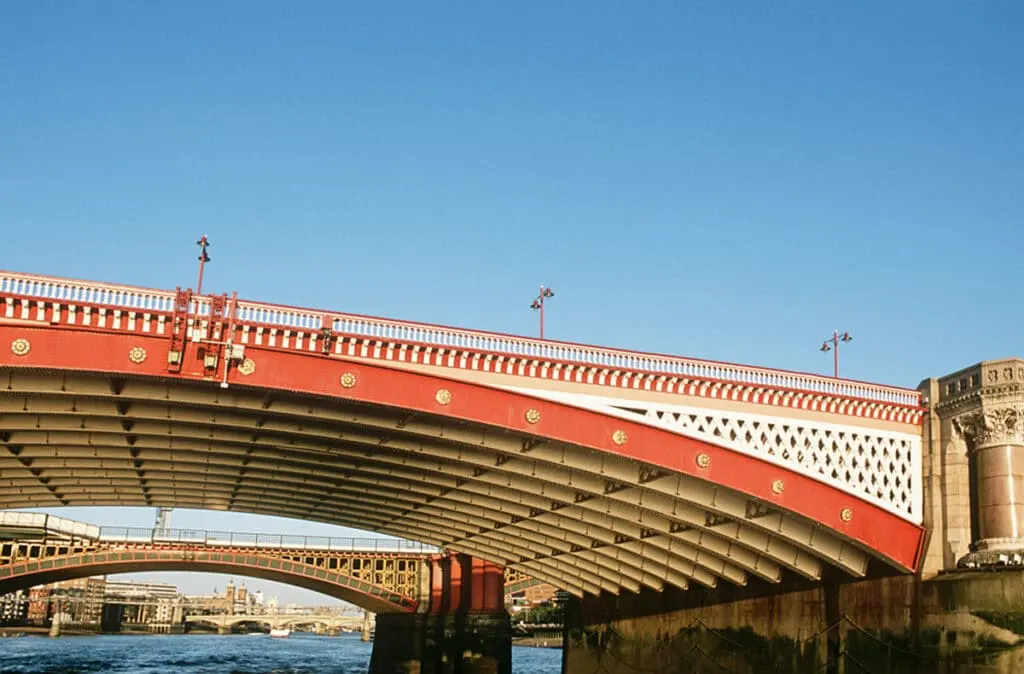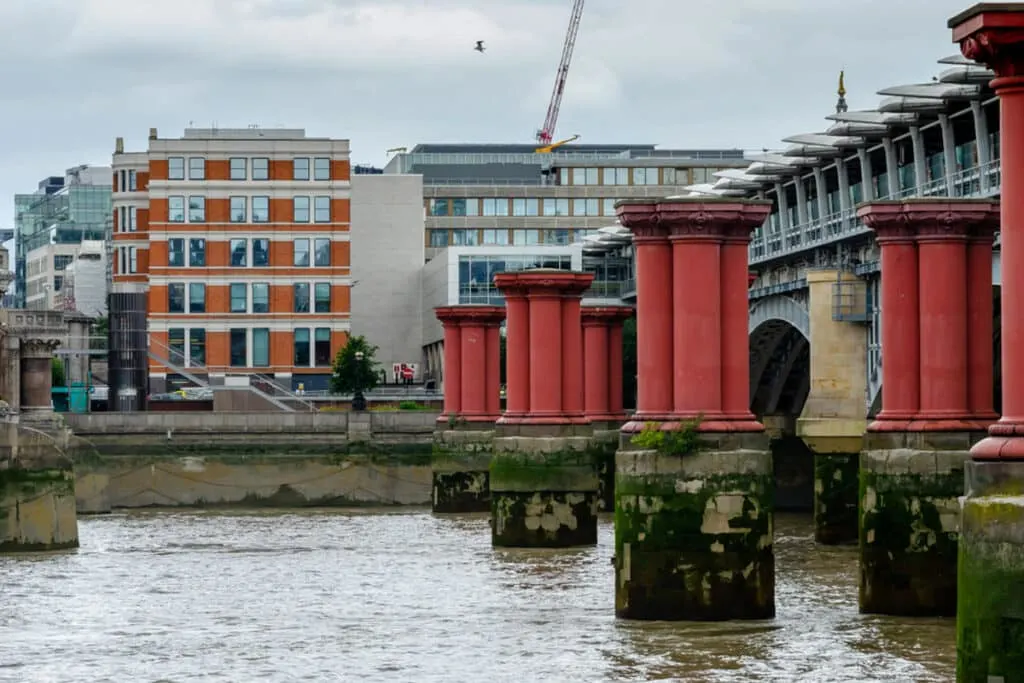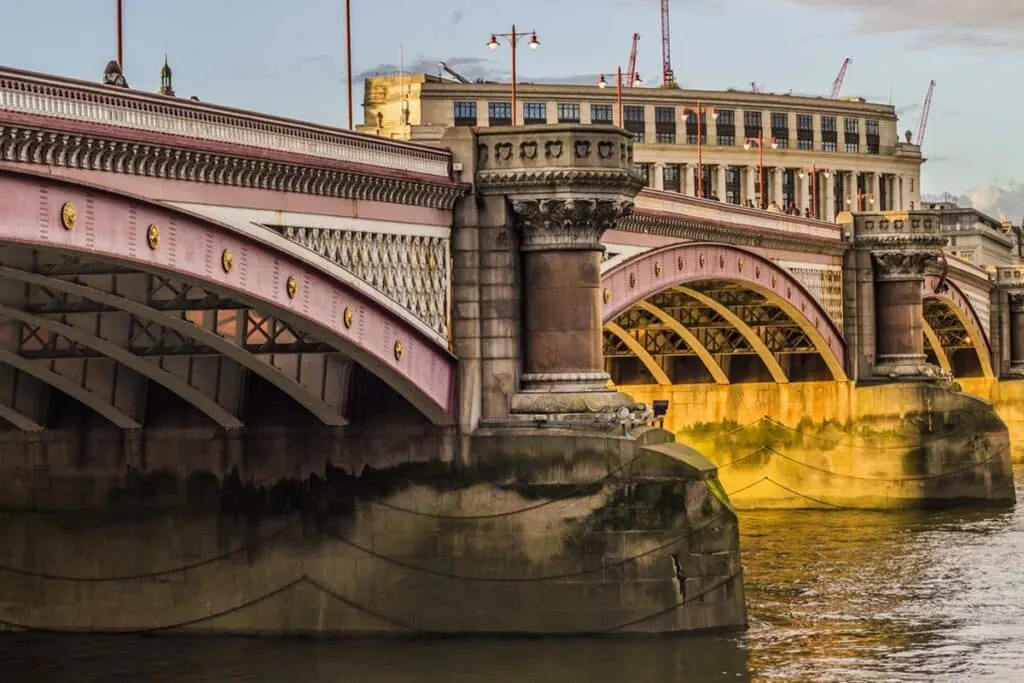We unpack the history of one of London’s most iconic bridges.
London’s a city that tells an interesting story wherever you look. Take Blackfriars Bridge for example. No doubt you’ve crossed it countless times. On the surface it’s just another route to the office, but dig a little deeper and there’s actually a pretty fascinating history behind it.
Did you know it was once falling down? Where’s the nursery rhyme for that? Or that it was built by a young up-start kid who’d never designed a bridge before (not why it fell down, funnily enough). How about the fact it was the site of an alleged mafia hit?
We’ve chronicled the history of this fine structure in full. Read on for the hidden secrets of Blackfriars Bridge.
Why Visit Blackfriars Bridge?

Allright, which of you smart arses said ‘to catch a train’? There’s so much more to this London bridge than just its advantageous commuter routes. In fact before Blackfirars even had railway connections it was the subject of a pretty interesting story.
You can still see remnants of that story in the bridgeless columns that jut out of the water between the railway link and the modern day Blackfriars Bridge.
The History of Blackfriars Bridge
Bridge Beef
Back in the 1700s London didn’t have as many bridges as it does now, and in fact building new ones was a point of contention…
That’s mainly because of the famous City of London Corporation, the people who run the square mile. They had been slow on the civic planning since the Great Fire and had the backs of the Thames Watermen – a group of workers that ran taxi boats across the river – to look out for. To put it simply – a new bridge wasn’t their top priority.
The problem was that at the time there was only one way to get from south of the river into The City – London Bridge, and it was far too crowded to operate effectively.
In the end it was a touch of envy that got the job done. Envy that is from the City’s rivals in Westminster, who had just constructed their own shiny new bridge complete with road improvements and all.
It was decided that a new bridge would be built. Its north end was to sit over the outflow of the River Fleet so it wouldn’t disrupt the shipping industry on the waterfront.
You can still see the Fleet River, now not much more than a trickle, underneath the Blackfriars Bridge today.
Mylne’s Bridge
The man who won the contract to construct the bridge was Robert Mylne, an odd choice at 25 years old, and for someone who’d never worked on bridge construction before in his life.
He was, though, a whiz, excelling in classes on classical architecture which he’d studied in Rome, the veritable home of the subject.
His bridge, which sadly wouldn’t last, was made of nine arches and used sturdy Portland stone from Dorset – a popular building material for public works at the time. His designs drew a lot of heat, including from the notable Samuel Johnson, but Mylne pressed on with his work, even buying a house on nearby Arundel Street so that he could watch the progress.
The project took nine years to complete, with Blackfriars Bridge finally opening in 1769. Back then it was actually called William Pitt Bridge after the great prime minister, but the name never stuck, instead being replaced with Blackfriars after a small monastery that sat nearby.
Cubitt’s Bridge

Even though Mylne’s Bridge was built of sturdy stone the workmanship was poor and after only 70 years standing it needed extensive repairs. Not even these held back the inevitable and in 1860 the original Blackfriars Bridge was dismantled.
The next bridge is the work of Thomas Cubitt. He had the snappy idea of building the new one out of wrought iron so that it wouldn’t crumble after just 90 years on the job (sorry Mylne). This is the bridge you can see and cross today.
Cubitt also designed a rail bridge to run parallel. In a bizarre twist of fate this rail bridge didn’t survive to the present day – seems like every architect who works this location must have at least one failed bridge.
Though to be fair, Cubitt’s rail bridge was dismantled more because it couldn’t support the weight of modern trains rather than because it was poorly built. You can still see the red supporting columns it used jutting out of the water between Blackfriars Bridge and the Station.
A Grizzly Tidbit

Back in 1982 the body of Roberto Calvi, chairman of the largest private bank in Italy, was found hanging from the underside of the bridge. In his pockets was $14,000 in three different currencies and, bizarrely, five bricks.
The death was treated as suicide right up until 2002 when forensics teams revisited the case and concluded Calvi had been murdered by the mafia with whom he’d likely been in some serious debt.
Five mafioso were tried in a Roman court in 2005 but acquitted for lack of evidence.
Blackfriars Bridge: Practical Information
Address: Blackfriars Rd, London SE1 9UD
Opening Times: 24/7

